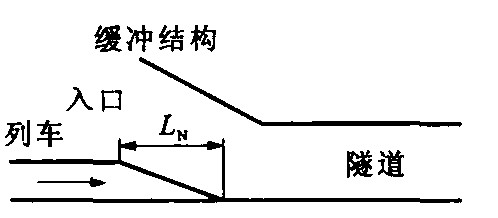Numerical value comparison of micro-pressure wave in reduction by using hoods at high-speed railway tunnel exit
Article Text (Baidu Translation)
-
摘要: 研究了高速铁路隧道出口微压波产生机理, 结合一维可压缩非定常不等熵空气流动理论和无限大障板圆形活塞辐射理论, 应用数值计算方法研究了不同形状缓冲结构条件下高速铁路隧道出口附近微压波规律。通过对缓冲结构形状以及各种参数计算结果进行定性与定量对比, 发现对于截面积变化的线型、抛物线型和不连续型缓冲结构, 随着长度和端口截面积增加, 隧道出口附近微压波强度衰减较大, 其中不连续型缓冲结构综合效果最佳; 而截面积为常量, 具有开孔的缓冲结构, 虽然也可较大幅度降低隧道出口附近微压波强度, 但是需要综合比较才能选取最佳结构参数。Abstract: Based on analyzing the generating mechanism of micro-pressure wave at high-speed railway tunnel exit, with one-dimensional unsteady-compressible-nonisentropic air flow theory and round-piston radiation theory with infinite baffle plate, the rules of micro-pressure waves generated by high-speed train near tunnel exit under different shape hoods were studied, the influences of various shapes and parameters of hoods on the waves were qualitatively and quantitatively analyzed.It is indicated that the wave intensity evidently decrease with the length and cross-section area increasing of line-type, parabola-shaped and discontinuous-type hoods, the effect of discontinuous-type hood is evidentest; when hood cross-section area is constant, but hood construction is perforated, the choice for the best structural parameters needs an integrated plan contrast although the wave intensity can be greatly reduced.
-
Key words:
- railway engineering /
- hood /
- tunnel micro-pressure wave /
- numerical calculation
-
[1] Ozawa S, Uchida T, Maeda T. Reduction of micro-pressure wave radiated fromtunnel exit by hood at tunnel entrance[J]. Quarterly Report of Railway Technical Research Institute of Japanese National Railways, 1978, 19 (2): 77-83. [2] Yamamoto A, Ozawa S, Maeda T. Reduction of micro-pressure wave radiated fromtunnel exit by side branches in tunnel[J]. Quarterly Report of Railway Technical Research Institute of Japanese National Railways, 1984, 25 (3): 102-105. [3] Ozawa S, Maeda T. Tunnel entrance hoods for reduction of micro-pressure wave[J]. Quarterly Report of Railway Technical Research Institute of Japanese National Railways, 1988, 29 (3): 134-139. [4] Ozawa S, Maeda T, Maisumura T, et al. Countermeasures to reduce micro-pressure wave form exits of shinkansen tunnels[A]//Proceedings of 7thInternational Symposiumon the Aerodynamics and Ventilation of Vehicle Tunnel[C]. Essex: Elsevier Science Publishers Ltd., 1991. [5] Matsuo K, Aoki T, Kashimura H, et al. Attenuation compression waves in a high-speed railway tunnel simulator[A]//Proceedings of 7th International Symposiumon the Aerodynamics and Ventilation of Vehicle Tunnel[C]. Essex: Elsevier Science Publishers Ltd., 1991. [6] 赵文成, 高波, 漆泰岳. 高速铁路隧道出口微压波及其主被动减缓措施[J]. 石家庄铁道学院学报, 2004, 17 (3): 5-9. https://www.cnki.com.cn/Article/CJFDTOTAL-SJZT200403002.htmZhao Wen-cheng, Gao Bo, Qi Tai-yue. Micro-pressure wave around high-speed railway tunnel exit and active and passive method of reduction[J]. Journal of Shijiazhuang Railway Institute, 2004, 17 (3): 5-9. (in Chinese) https://www.cnki.com.cn/Article/CJFDTOTAL-SJZT200403002.htm [7] 梅元贵, 耿烽. 基于变流通截面的高速铁路隧道单车压力波数值计算探讨[J]. 铁道学报, 2003, 25 (2): 74-78. https://www.cnki.com.cn/Article/CJFDTOTAL-TDXB200302017.htmMei Yuan-gui, Geng Feng. Numerical study of pressure waves produced by a high-speed train through a tunnel based on varying flowcross-sectional area[J]. Journal of the China Railway Society, 2003, 25 (2): 74-78. (in Chinese) https://www.cnki.com.cn/Article/CJFDTOTAL-TDXB200302017.htm [8] Kage K. Numerical study of compression waves produced by high-speed train entering a tunnel[J]. Transactions of Japan Society of Mechanical Engineers (B), 1993, 59: 1 168-1 174. [9] 杜功焕, 朱哲民, 龚秀芬. 声学基础[M]. 上海: 上海科学技术出版社, 1981. -





 下载:
下载:











